Gellért Hill rises majestically above the Danube River, offering visitors a panoramic view of the city of Budapest. Some of the most interesting sights on the hill include a cave church and two large monuments.
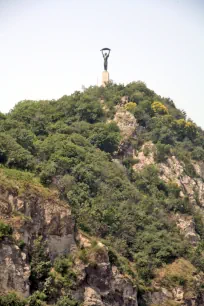
The about 140 meter-high (460 ft.) Gellért Hill is named for bishop Gellért Sagredo, known for his mission to spread Christianity throughout Hungary. After the death of Saint Stephen, the first Christian king of Hungary, legend has it that the rebelling insurgent pagan Magyars sealed Gellért up in a barrel and hurled him down the side of the hill.
The Citadel
Atop Gellért Hill sits the Citadel, a structure built by the Austrian Habsburgs between 1850 and 1854 in order to better control the city after the suppression of the Hungarian War of Independence. This fortress, which sits at the top of the hill, was originally about 200 meters (220 yards) long with walls about six meters (20 feet) high and up to three meters (10 feet) thick.
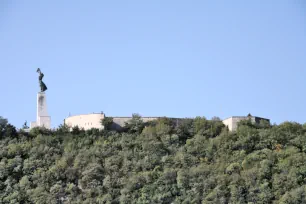
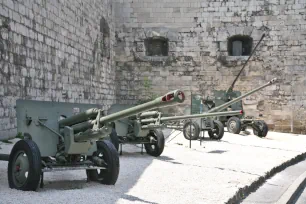
When the Habsburgs left Budapest as a result of the Austro-Hungarian Compromise of 1867, ownership of the fortress reverted to the city. They tore down part of the walls as a symbol of victory against the Austrians. However, the Citadel was to be used again to house Hungarian soldiers.
The Citadel also played a role in World War II. Historians point out that it was from the Citadel that a German SS regiment held the city at bay.
Today, the old barracks have been converted into a tourist hotel and the structure mostly serves as a place from which guests can enjoy views of the city and the pretty Danube River below.
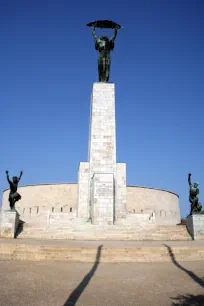
Liberty Monument
Erected atop the hill in 1947, the Liberty Monument originally paid homage to the Soviet soldiers who liberated the city from the Nazis during World War II. The monument was designed by the Hungarian sculptor Kisfaludi Strobl.
A palm-bearing statue of a female on a tall pedestal stands about 14 meters (46 feet) in the air. On her right-hand side is an allegorical representation of ‘Progress’ and the statue to her left represents ‘Evil’.
After the fall of Communism, the statue of a Soviet soldier that originally stood in front of the monument was banished to the Memento Park on the outskirts of the city.
Cave Church
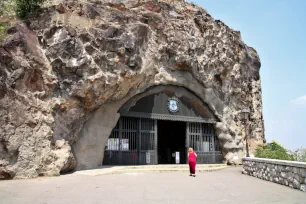
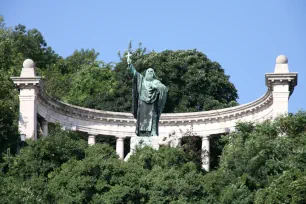
If you walk up the hill starting at the Gellért Hotel, you can see a cave church on your right. The church was founded in 1926. It was used by the Pauline order until 1951, when the church was closed by the Communists. It reopened again in 1989. Near the entrance to the church stands a statue of St. Stephen, the first Christian king of Hungary.
Gellért Monument
At the other side of the hill, near the Elisabeth Bridge, is a large bronze statue of bishop Gellért, the martyr after whom the hill was named. The monument was built in 1904 at the site where Gellért was presumably killed in the eleventh century.
Climbing the Hill
You can climb the Gellért Hill starting at the Elisabeth Bridge near the Gellért Monument, or you can take the (steeper) route starting at the Gellért Hotel. You can also take a bus or get there by taxi, but where’s the fun in that?

